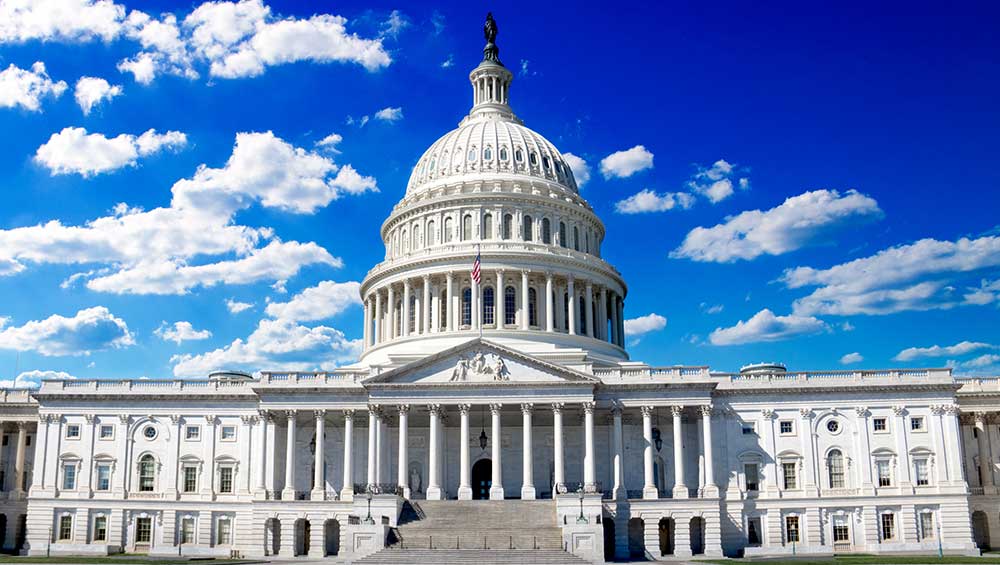President Trump's tax-plan announcement Wednesday was expected to be a public-relations pitch selling tax cuts with few offsets, but many businesses would lose key deductions along with the lower headline rates.
XBig tech stocks like Apple (AAPL) and Facebook (FB) would be among the winners, getting a tax break on foreign profits they've been holding overseas to avoid having them taxed at the statutory 35% rate (less taxes paid to the country where they're earned). Those sheltered profits would face a one-time tax at a lower, yet-to-be-determined rate, while future foreign profits wouldn't be subject to U.S. taxes.
Shares of Apple rose 0.7% and Facebook 2.1% on the stock market today.
Perhaps the most surprising pay-for was the vague language saying that the deduction for corporations' interest expense "will be partially limited." Economists like the idea of ending the tax code's incentive to issue debt over equity, which stands to cost the government $1 trillion in revenue over 10 years. But that provision, depending on how it's eventually written, could face serious opposition from industries with high debt loads.
Advertisement
"Highly leveraged firms will oppose such a change, but lawmakers will need to pursue bold changes to the corporate tax to enact a rate lower than 28.5%," wrote Scott Greenberg, senior analyst at the conservative Tax Foundation.
The interest deduction provision may be why shares of Verizon (VZ), a big issuer of debt, were down for much of Wednesday's session and closed flat even as the S&P 500 index hit new highs.
Then there's this: The domestic production deduction, worth about $175 billion over 10 years, "will no longer be necessary." Ending the deduction is akin to a three-percentage-point increase in the tax rate on income earned from domestic manufacturing, a surprising move given Trump's made-in-America preference.
IBD'S TAKE: Try out premium IBD features for free through Oct. 8. Popular offerings include exclusive stock lists; IBD Stock Checkup, which ranks the leaders in 197 industry groups based on earnings, sales, margins and stock performance; and The Big Picture, a daily update of the underlying market trend. On Aug. 22, IBD shifted its market-trend gauge to "confirmed uptrend" from "uptrend under pressure," the equivalent of a flashing yellow light turning green.
There's no doubt that the sweets, such as a corporate income tax rate of 20% and a 25% rate for small firms and partnerships that have been subject to individual tax rates of up to 39.6%, will make the overall menu more appetizing. Yet their inclusion highlights the difficult job that Republicans face in coming months trying to come up with big tax cuts that don't blow a much bigger hole in a budget picture already viewed as unsustainable.

Perhaps the biggest challenge will be getting the corporate tax rate down to 20%, which will reduce tax revenue by about $1.9 trillion over 10 years, according to the Center for a Responsible Federal Budget (excluding the $500 billion cost of a 25% rate on business income paid through the individual tax code). If Republicans can only get the corporate rate down to 25%, as many on Wall Street expect, then the plan for taxing foreign earnings in only the territory where they are earned will come under heavy fire as an incentive for shifting profits overseas to lower-tax jurisdictions.
Republican tax negotiators agreed last week to craft a plan that would limit deficit-financed tax cuts to $1.5 trillion over 10 years. While it still remains to be seen whether 50 of 52 Senate Republicans will back that idea — Sen. John McCain is already sounding like a no — a budget resolution based on that target would make a corporate tax cut "much easier, since a portion of the cost would not need to be paid for," wrote Goldman Sachs political economist Alec Phillips.
On the other hand, the more that the GOP relies on deficits to offset the cost of cutting taxes on business income, the more the burden of paying for tax cuts will shift to individuals. Yet Phillips sees uncertain prospects for the big pay-for that's so far been discussed, ending the deduction for taxes paid to state and local governments. He notes that 28 Republicans come from the three highest-tax states (New York, New Jersey and California) and dozens more come from other relatively high-tax areas.
Trump has already signaled his determination to cut taxes for the middle class and his willingness to sacrifice lower rates for high earners. Instead of the 35% top income rate leaked over the weekend, the framework released on Wednesday says "an additional top rate may apply to the highest-income taxpayers."
Trump's Tax Cut Plan Is Still Unbelievably Huge
Bank Of America Leads 5 Banks Hitting Buys As GOP Tax Plan Boosts Yields
McCain Killed ObamaCare Repeal, Wounded Tax Reform In One Blow
These Are The Biggest Losers From Trump's Tax Reform
Stocks To Buy And Watch: Top IPOs, Big And Small Caps, Growth Stocks